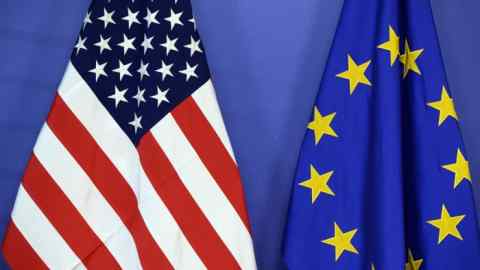Roula Khalaf, Editor of the FT, selects her favourite stories in this weekly newsletter.
Sweden’s central bank cut interest rates for the first time in eight years as European monetary policymakers diverge from the US to support their economies even if it comes at the expense of their currencies.
The Riksbank reduced its main interest rate by 0.25 percentage points to 3.75 per cent on Wednesday, the first time it has loosened policy ahead of the US Federal Reserve this century.
“We are convinced enough that inflation has come down, and has come down in a sustainable way,” Erik Thedéen, the Riksbank’s governor, told the Financial Times.
But he added most of the risks were “on the upside” such as a further weakening of the Swedish krona leading to higher imported inflation, geopolitical risks and the continued strength of the US economy.
The Swedish rate cut, following recent similar moves by the Swiss, Czech and Hungarian central banks, shows Europe’s growing willingness to take a different path from the US on monetary policy, economists say.
An expected cut by the European Central Bank at its next meeting would confirm that divergence. Because of the size of the US economy and the outsized influence of its financial markets and the dollar, the Fed usually leads the way on changing rates.
After the Riksbank’s decision the krona slid 0.4 per cent against the dollar to SKr10.90 and 0.3 per cent against the euro to SKr11.71.
Sweden’s currency is the third-worst performer in the G10 group of most traded currencies this year, down 7.5 per cent against the dollar and 5 per cent against the euro.
Christina Nyman, chief economist at Handelsbanken and a former Riksbank official, said earlier that a rate cut would put the krona under further pressure, particularly if the Fed delays its own cuts.
“It’s the currency that could potentially be a problem. Sweden is a small open economy and we are dependent on what happens around us,” she said.
With US inflation remaining higher than expected and its economy continuing to produce solid growth, the Fed last week signalled it was likely to keep rates higher for longer.
However, inflation and growth in Europe have been weaker in recent months than in the US, opening the door for the region’s central banks to start lowering borrowing costs before the Fed.
The ECB has signalled it is likely to start cutting rates at its next policy meeting on June 6 if price pressures keep fading as expected. The Riksbank has moved ahead of the ECB before: in 2019 it ditched negative interest rates more than two years before they ended in the Eurozone.
More than two-thirds of Sweden’s imports and half of its exports are traded with the EU, making the Nordic economy sensitive to shifts in the euro and ECB monetary policy decisions.
But there are worries that if rates in Europe fall faster than in the US, it would cause European currencies to depreciate against the dollar, raising import prices and fuelling higher inflation.
Thedéen acknowledged the krona and potentially even monetary policy could be affected by a strong US economy that caused the Fed to delay rate cuts for longer than expected.
Piet Haines Christiansen, a strategist at Danske Bank, said: “The Riksbank is particularly interesting to watch in this episode as the structure of the Swedish economy is closely related to the wider European one and hence it acts more as a precursor [than Switzerland] for what may come from the ECB.”
Recommended

Sweden’s economy contracted both last year and in the first quarter of this year after rate rises led to a sharp drop in house prices and fall in consumption, while there are signs inflation should reach the Riksbank’s 2 per cent target in 2024.
Thedéen underscored that the Riksbank believed the krona was “fundamentally undervalued” as companies from neighbouring countries flocked to Sweden to buy capital goods. He said there was a risk lower rates could lead to a reduced exchange rate and thus higher import costs but he said other inflationary factors — such as activity levels, price-setting by companies and wage growth — supported a rate cut.
The Swedish rate cut stands in contrast with sentiment in neighbouring Norway, which is also suffering from a weak currency. Norges Bank last week indicated it would keep rates on hold, with some economists now expecting it not to cut until December or even next year. That would probably make it one of the last major central banks to start loosening.
Additional reporting by Mary McDougall in London
Source link : https://www.ft.com/content/cd9066ae-0891-4402-b47a-35d41e18b8e6
Author :
Publish date : 2024-05-08 07:00:00
Copyright for syndicated content belongs to the linked Source.







